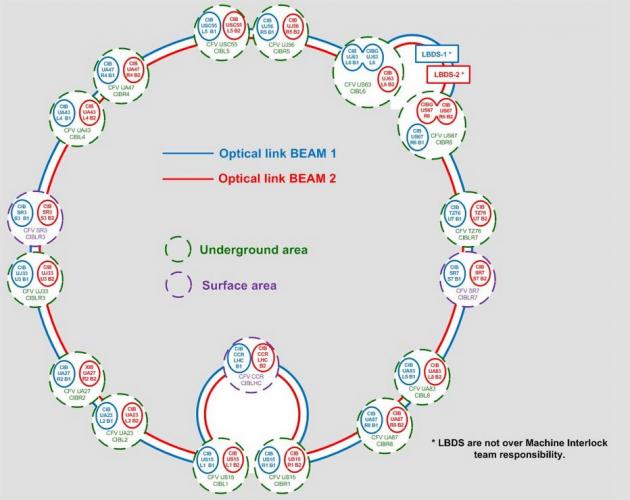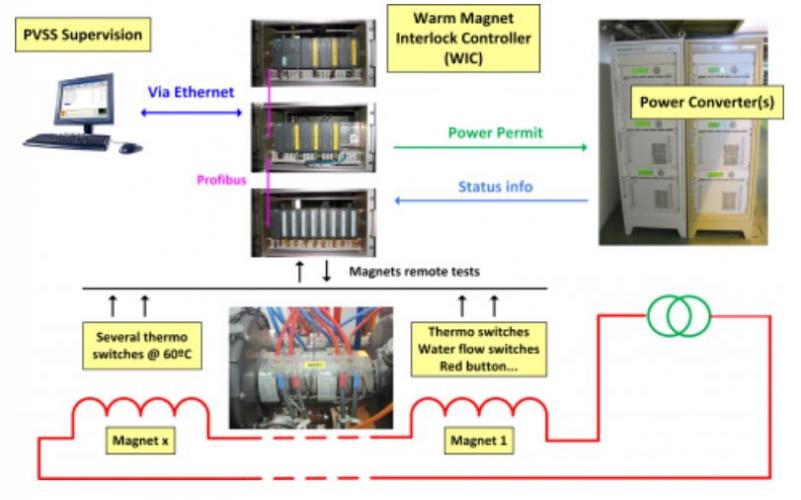


The Machine Interlocks section (MI) is responsible for the development, implementation and operation of various magnet powering and beam related interlock systems, deployed CERN wide. The interlock systems are a vital part of the machine protection systems which protect the machine elements from damage. This encompasses both the damage of accelerator equipment by beam impact and equipment damage due to its own malfunctioning. Interlock systems need to operate in a very reliable manner as their failure can potentially lead to significant down time of the affected accelerators. The reliability is guaranteed by dependable designs, the use of equipment designed for safety and regular operational checks of the systems following strict procedures.
The following systems are under the responsibility of the section:
- Beam Interlock System (BIS): This system transmits the request from any equipment system (beam loss monitors, cryogenics, magnet interlock controllers etc.) to either a beam dumping system or inhibits the injection or transfer of beams. There are dedicated injection and extraction BIS. The architecture of the BIS can be a ring topology or tree topology and can be daisy-chained if desired. The BIS can be found in most accelerator installations at CERN, from LINAC4 to the LHC. The Safe Machine Parameter system (SMP) is complementing the BIS and allows the masking of certain interlocks under set-up beam conditions.
- Powering Interlock System (PIC): The PIC is used in the LHC as part of the protection of the superconducting circuits, assuring safe powering conditions of the magnets and circuit elements. It mainly interacts with the power converters of the superconducting magnets, the cryogenics system, the Quench Protection System and the BIS.
- Fast Magnet Current Change Monitor (FMCM): The FMCM is installed in the LHC and in the transfer lines between the SPS and the LHC. The system surveys the voltage across a selection of critical warm magnets which due to fast magnetic field variations could cause significant variations to the beam orbit or trajectory which in turn could cause damage to the accelerator or transfer line components. The FMCM is connected to the BIS.
- Warm Magnet Interlock Controller (WIC): The WIC protects the normal conducting magnets across the accelerator complex. It surveys the magnet temperature switches and cooling water flow switches and stops the connected power converters in case of risk of damaging the magnet. The WIC can be connected to the BIS to stop the beam in case of magnet overheating or a problem on the corresponding power converters.
The different systems described above are either PLC based, like in the case of the WIC when reaction time is less critical, or dedicated analogue designs in the case of the FMCM or the BIS when the required reaction times are in the order of microseconds. The system can also be mixed, which is the case of the PIC. The section consists of a team of electronics and electrical technicians and engineers working closely with other hardware groups at CERN and beam operations. As the reliability of the systems is very important, the section also performs reliability and availability studies of their equipment and related hardware systems.
SECTION LEADER
I. Romera Ramirez x74170
